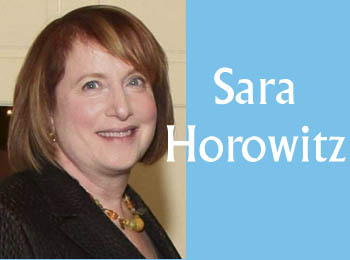The 17th-century French mathematician and philosopher Blaise Pascal noted that, as human beings in the world of nature, we are poised between two infinitudes that define us.
On the one hand, there is the infinitely small. We see only the world of the visible. But, Pascal observed, so much is hidden from us – atomic particles, invisible tiny creatures. “All this visible world,” he wrote, “is but an imperceptible point in the ample bosom of nature.”
On the other hand, as Pascal pointed out, there is the infinitely vast. He wrote: “Nature is an infinite sphere whose centre is everywhere and whose circumference is nowhere.”
In other words, the universe humbles us. Pascal expresses this in language resonant with the Yom Kippur liturgy: “For after all, what is man in nature? A nothing in relation to infinity, an all in relation to nothing, a point between nothing and everything and infinitely far from understanding either. The ends of things and their beginnings are impregnably concealed from him in an impenetrable secret. He is equally incapable of seeing the nothingness out of which he was drawn and the infinite in which he is engulfed.”
Pascal’s meditation on the place of humanity in the universe resonates deeply with the thrust of the High Holiday liturgy. His two-sided image of human existence – “a nothing in relation to infinity, an all in relation to nothing” – brings to mind a famous story attributed to Rabbi Simcha Bunim of Peshischa, a chassidic rebbe in the late-18th and early-19th centuries, a little over a century after Pascal. Unusual for his time, he was both a Chassid and a scientist, an intellectual who read philosophy alongside chassidic teachings and believed that study was the route to a close emotional connection with God.
Because of its thematic connection to the Yamim Noraim liturgy, one of Rabbi Bunim’s stories is often retold in the commentary sections and notes of High Holiday machzorim: Every person should have two pockets, with a note in one saying, “Bishvili nivra ha’olam” (for my sake was the world created), and a note in the other saying, “Anochi afar va’efer” (I am dust and ashes).
Most retellings of the story add an interpretation: when we feel worthless, we find reassurance in the note that affirms our centrality to the world. But, lest we get a swelled head, the other message deflates our arrogance. Interpreted in this way, the story addresses the contradiction that our tradition assigns to our position, and that the Yom Kippur liturgy emphasizes: master over all living things, and, at the same time, insignificant and impermanent.
The man with the pockets is a bit like Alice in Wonderland with the magic mushroom: one side makes her grow to gigantic proportions, the other side shrinks her to the point of vanishing. If she eats from one side, the world cannot contain her. If she eats from the other, she risks slipping into non-being.
But other versions and other interpretations of the story exist, and these, too, bear in interesting ways on the themes of the High Holidays. Like many rebbes’ teachings, Rabbi Bunim’s story was passed down through his disciples, orally and eventually in writing, and varying versions can be found.
In one version, the rebbe adds instructions: one must also divide his money between the two note-bearing pockets. When we come upon human misery and injustice, the note stating that the world was created for us functions as a call to action, a reminder of our commonality and obligation to other human beings, our responsibility to other creatures and the natural world. Rather than asserting our importance, the note impels us to use our resources for tikkun olam.
When we feel a longing for material possessions, the other note reminds us of the enduring importance of our spiritual side, because the physical world fades. Evoking our mortality, it is designed not to deflate us, but to give us the courage of our convictions and the sense of urgency to do what we believe is right. Focusing us less on what we are, and more on what we might do, this version carries us from the meditations of the liturgy into the world awaiting us outside.
